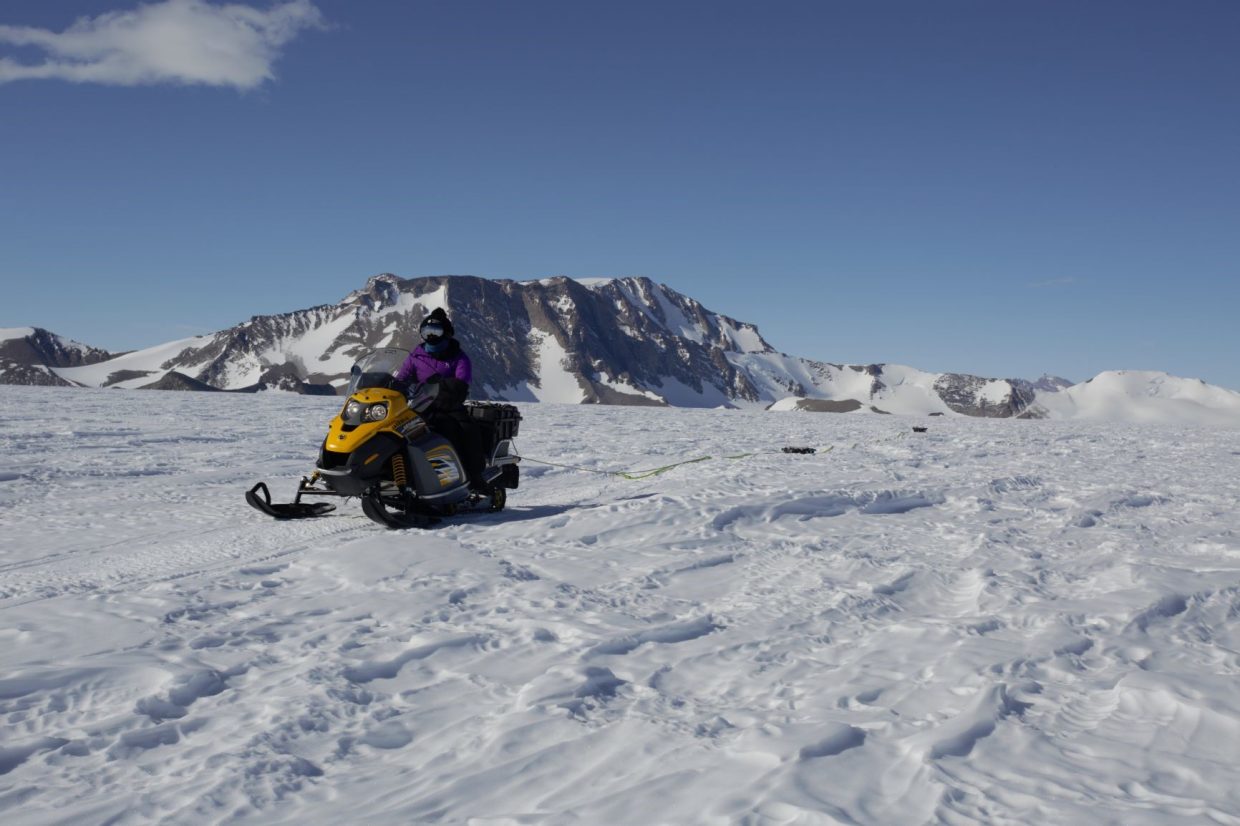Full of Surprises: Subglacial lakes and climate change in Antarctica
Antarctic Science International Bursary winner Kate Winter recently co-authored a paper published by Nature Reviews on her research on subglacial lakes, which was supported by her 2018 award. Subglacial lakes, or accumulation of liquid water underneath ice masses, are formed from meltwater between ice and underlying bedrock and can become separated from the external environment for thousands of years.
Winter and her colleagues completed the first global inventory of subglacial lakes, which will make it easier to compare and contrast findings as more research is completed on these microcosms. As temperatures increase, this inventory of 773 subglacial lakes will become crucial in anticipating how subglacial lakes might change in different parts of the world. “There is a lot more meltwater in Greenland than Antarctica, because Antarctica is much colder, so we can use Greenland as an analogue to begin to understand the changes we might see in Antarctic subglacial lakes, and the ice that flows above them, if temperatures were to increase,” said Winter.
The research found that 80% of the subglacial lakes studied were stable, which signals that they are either closed systems or have a net zero change in water. The rest of the lakes were found to be active with a range of activity patterns. The team of researchers also documented differences in discharge and lake volumes based on the geographic location of the lake: higher discharge rate for a given volume in Greenland and Iceland, lower in Antarctica.
As Winter and Rebecca Sanderson, co-author and masters student, began their research and looking into existing ice penetrating radar data, they discovered several undocumented Antarctic subglacial lakes and made sure to include them in the global inventory. The datasets were collected by a team of scientists in the United States over 10 years ago, demonstrating the importance of returning to and learning from past research. “Exploring the pre-existing datasets in a new way and working on this paper shows that our knowledge of subglacial lakes has increased so much in the past 20 or so years, and that there is still so much to learn,” said Winter. “My Antarctic Science International Bursary helped me to travel to the United Sates to explore the dataset with Professor Robin Bell at Lamont Doherty Earth Observatory.”
Since the inventory process of the world’s subglacial lakes has begun, Winter has already started thinking about the steps in her research. “Our inventory has allowed us to clearly identify gaps in our collective knowledge so we know where to focus our research on in the future. There is still so much to learn about how subglacial lakes fill and drain, and what life they contain,” she said. “I’m delighted that scientists are so open to sharing data and information – there’s so much we can still learn from each other and from older datasets.”

Masthead image credit: Kate Winter






